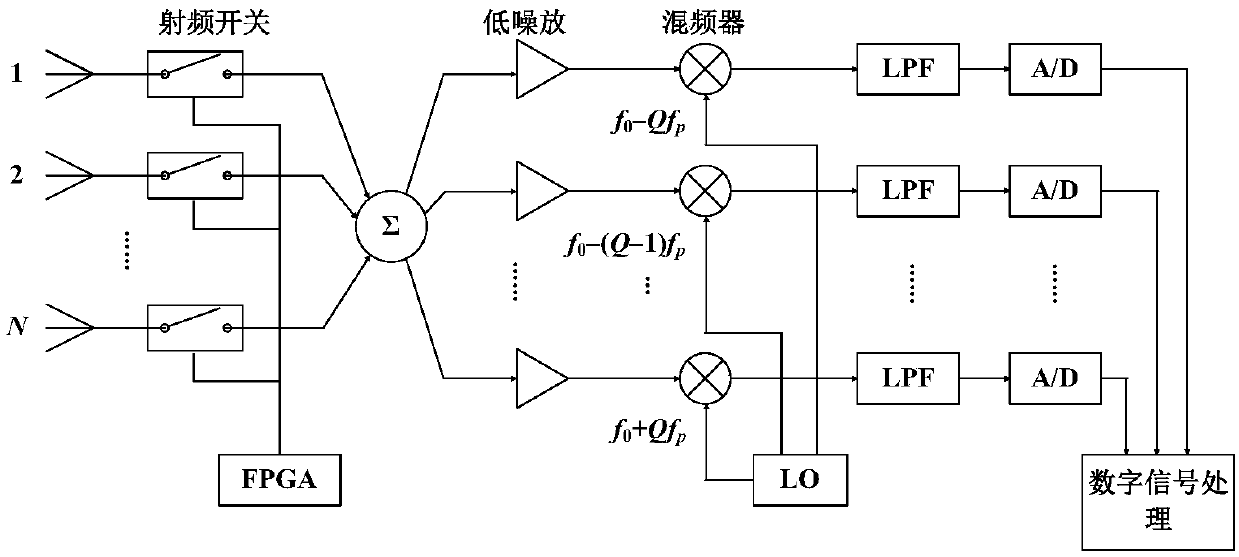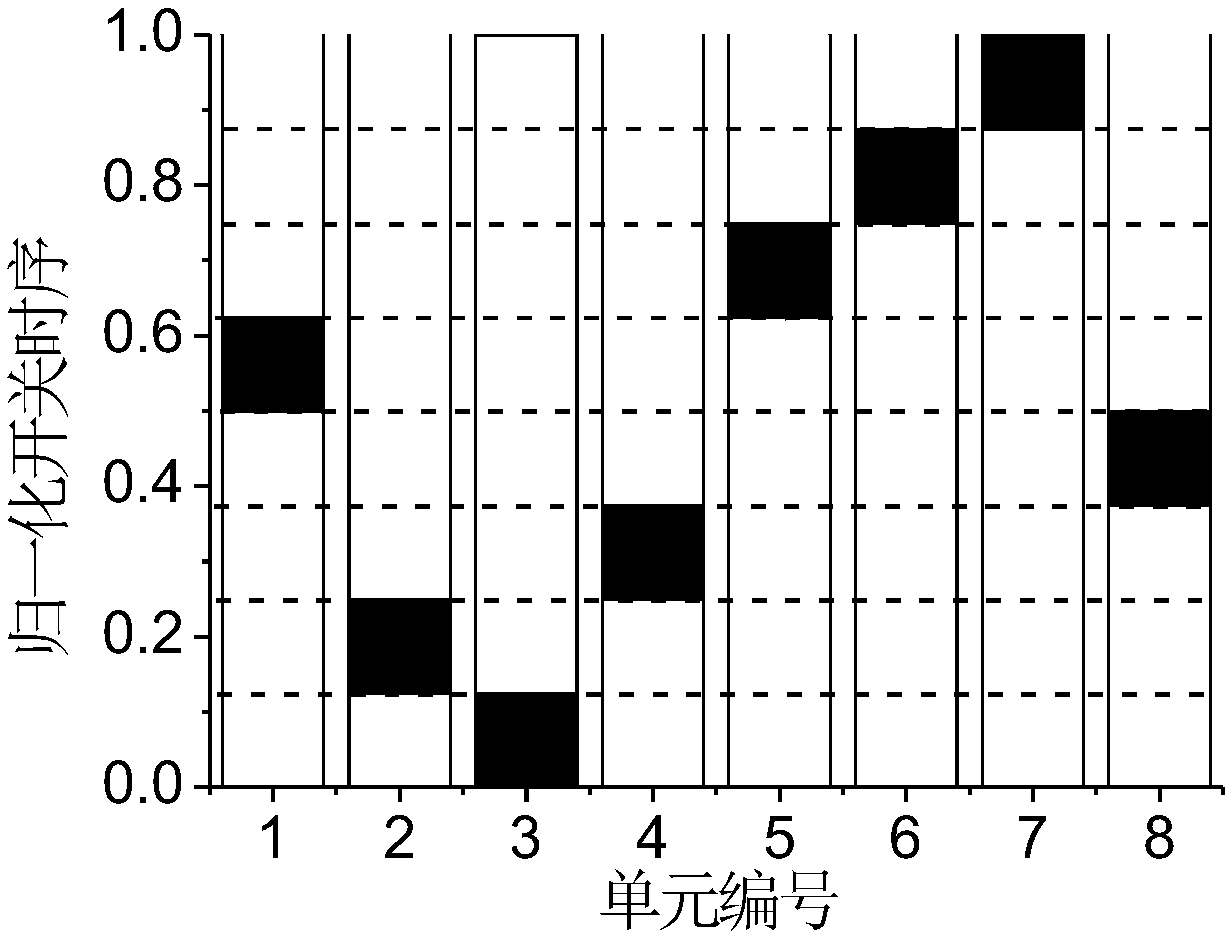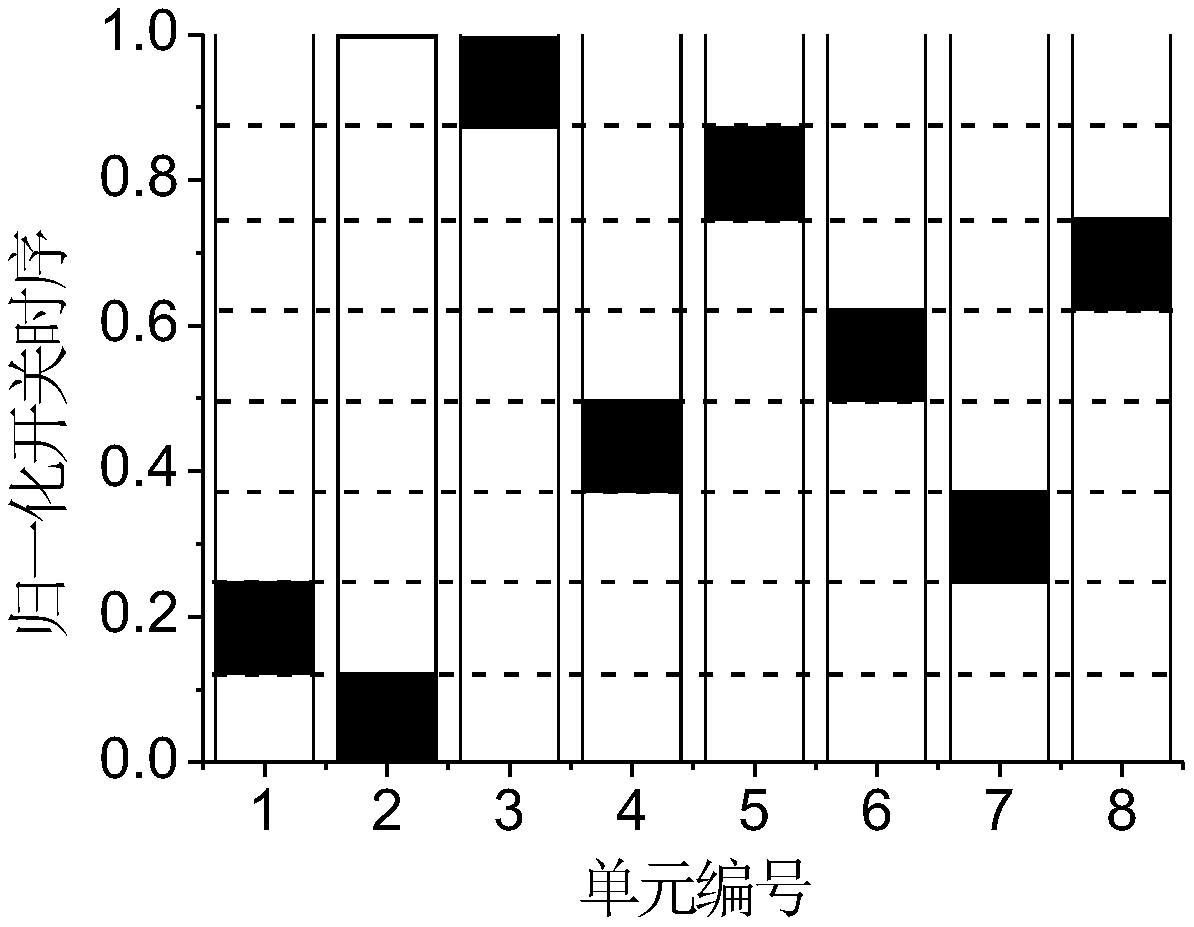Compressed sensing theory-based four-dimensional antenna array DOA estimation method
A compressed sensing, antenna array technology, applied in radio wave direction/bias determination systems, direction finders using electromagnetic waves, direction finders using radio waves, etc. The angle range is not large, etc.
- Summary
- Abstract
- Description
- Claims
- Application Information
AI Technical Summary
Problems solved by technology
Method used
Image
Examples
Embodiment 1
[0067] Example 1: Optimal timing of 8-unit half-wavelength four-dimensional linear array
[0068] Consider a uniform 4D linear array of 8 elements. The center frequency and switching modulation frequency are set to f 0 = 3GHz and f p =100KHz, the timing adopts the pulse translation timing. In order to include the angle of the entire space as much as possible while taking into account the calculation efficiency, the entire upper half space is evenly divided into 180 parts from -90 to 90, that is, sampling is performed at intervals of 1 degree. Later, after roughly knowing the range of the incident direction of the signal, it can be more accurate. Angle division. The differential evolution algorithm mentioned above is used to optimize the time sequence so that the fitness function value of (20) is as small as possible. At the same time, in order to analyze the influence of the number of sidebands taken, Q=2 and Q=3 are used for timing optimization respectively.
[0069] f...
Embodiment 2
[0070] Example 2: Spatial spectrum estimated by 8-unit half-wavelength four-dimensional linear array DOA
[0071] In order to illustrate the effectiveness of the optimized time series for 4D array DOA estimation, the above optimized time series is used for DOA estimation, which is mainly illustrated by calculating the estimated spatial spectrum. Assume that there are three narrowband signals with the same frequency and the same power from the far field θ 1 =-10°, θ 2 = 0° and θ 3 =5° is incident on this 8-element four-dimensional linear array. Other related parameters are set as follows: number of snapshots L=100, number of sidebands Q=3. Figure 5Indicates the spatial spectrum calculated by the sparse signal recovery algorithm according to the optimized timing as a function of the signal-to-noise ratio. It can be seen that even under the condition of low signal-to-noise ratio, the incident direction of the signal can be estimated by using the optimized timing. For compar...
Embodiment 3
[0072] Example 3: Resolution probability of 8-unit four-dimensional linear array DOA estimation
[0073] In order to continue to illustrate the effectiveness of the optimized timing for 4D array DOA estimation, it is illustrated here by comparing the estimated resolution probabilities. Suppose there are two narrowband signals with the same frequency and the same power from the far field θ 1 = -10° and θ 2 =0° is incident on this 8-element four-dimensional linear array. Other related parameters are set as follows: number of snapshots L=100, number of sidebands Q=3. Figure 7 The variation of the estimated resolution probability with the signal-to-noise ratio is described when the proposed method of the present invention and the MUSIC algorithm perform DOA estimation under the same parameter conditions. It can be found that the estimation probability of the present invention is higher than that of the MUSIC algorithm under the condition of low signal-to-noise ratio. Next, we...
PUM
 Login to View More
Login to View More Abstract
Description
Claims
Application Information
 Login to View More
Login to View More - R&D
- Intellectual Property
- Life Sciences
- Materials
- Tech Scout
- Unparalleled Data Quality
- Higher Quality Content
- 60% Fewer Hallucinations
Browse by: Latest US Patents, China's latest patents, Technical Efficacy Thesaurus, Application Domain, Technology Topic, Popular Technical Reports.
© 2025 PatSnap. All rights reserved.Legal|Privacy policy|Modern Slavery Act Transparency Statement|Sitemap|About US| Contact US: help@patsnap.com



